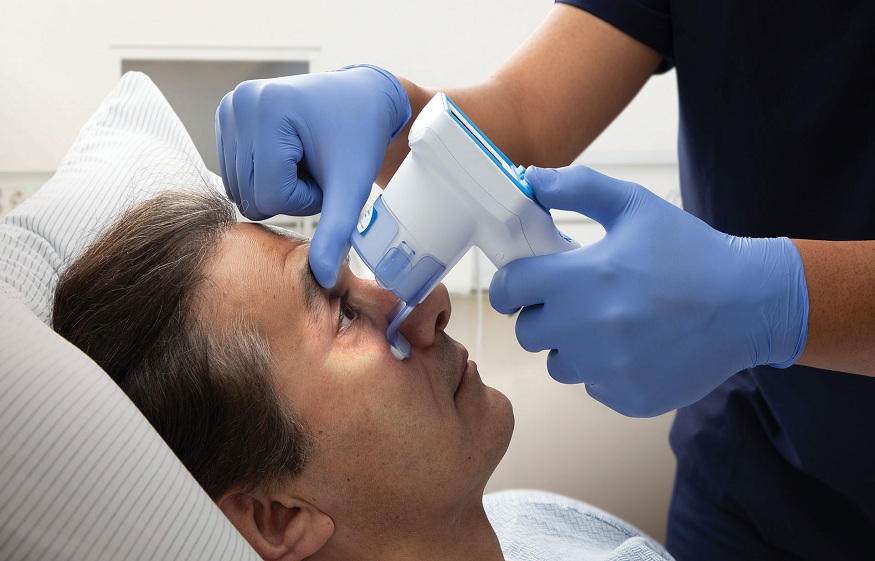Factors Influencing Pupil Constriction Velocity: Insights from Research

Pupil constriction velocity, a critical parameter in neurological assessments, offers valuable insights into the functioning of the autonomic nervous system and brain health. The ability to measure and interpret this aspect of pupillary response is integral to the practice of neuro-ophthalmology and general neuro exams. This blog explores the factors influencing pupil constriction velocity, leveraging current research to provide a comprehensive understanding.
Different Factors Influencing Pupil Constriction Velocity
The Role of Light Intensity
One of the primary factors affecting pupil constriction velocity is the intensity of light. Higher light intensity typically triggers faster constriction. Research shows that the retina’s photoreceptors, particularly the rods and cones, react more swiftly under bright light conditions, prompting a quicker signal transmission to the brain’s pretectal area and subsequently to the Edinger-Westphal nucleus, which controls the iris sphincter muscle. This accelerated neural pathway response results in rapid pupil constriction.
Influence of Age on Pupillary Response
Age is another significant factor influencing pupil constriction velocity. Studies indicate that as individuals age, there is a natural decline in the speed of pupillary responses. This is partly due to the reduced responsiveness of photoreceptors and the gradual deterioration of neural pathways involved in the pupillary light reflex. Elderly patients often exhibit slower constriction velocities during a pupil exam, reflecting age-related changes in neurological and ocular health.
Impact of Medications and Substances
Certain medications and substances can profoundly impact pupil constriction velocity. For example, opioids and sedatives tend to cause miosis (pupil constriction) and can alter the normal pupil dilation velocity of this response. Conversely, stimulant drugs like amphetamines can lead to mydriasis (pupil dilation), affecting the overall dynamics of pupillary responses. Understanding these effects is crucial during neuro exams, as they can provide clues about a patient’s medication use or potential substance abuse.
Neurological Conditions and Pupil Dynamics
Neurological disorders can significantly alter pupil constriction velocity. Conditions such as traumatic brain injury (TBI), stroke, and brain tumors can disrupt the neural circuits responsible for pupillary responses. For instance, a patient with TBI may exhibit abnormal or asymmetrical constriction velocities, signaling potential damage to the brain areas governing the pupillary light reflex. The NPi is particularly useful in these cases, offering an objective measure to assess and monitor pupillary function.
Autonomic Nervous System Dysfunction
The autonomic nervous system (ANS), comprising the sympathetic and parasympathetic branches, plays a vital role in regulating pupil size. Dysfunction in either branch can lead to abnormal pupil constriction velocities. For instance, parasympathetic dysfunction may result in slower constriction due to impaired iris sphincter muscle activation. Evaluating ANS function through pupillary responses is a critical aspect of comprehensive neurological assessments.
Advances in Diagnostic Technology
Recent advancements in diagnostic technology have enhanced the precision of measuring pupil constriction velocity. Modern pupillometry devices and software enable healthcare professionals to capture detailed, real-time data on pupillary responses. These neurological tools, coupled with the NPi, provide a robust framework for analyzing and interpreting pupillary dynamics, leading to more accurate and timely diagnoses.
Environmental and Physiological Factors
Beyond the more commonly studied factors, environmental and physiological conditions can also influence pupil constriction velocity. Ambient temperature, for example, can affect the autonomic nervous system’s regulation of the iris muscles. Colder environments may lead to slower constriction velocities due to reduced nerve conduction velocity and muscle responsiveness. Additionally, systemic health conditions such as diabetes and hypertension can impact the health of neural pathways and blood flow, potentially altering pupillary responses.
The Significance of Sleep and Fatigue
Sleep and fatigue levels also play a crucial role in determining pupil constriction velocity. Research indicates that sleep deprivation can lead to sluggish pupillary reactions. Fatigue impairs cognitive function and slows down neural processing, which is reflected in delayed pupillary responses. This factor is particularly relevant in clinical settings where patients might be undergoing assessments after prolonged periods of wakefulness.
Psychological and Emotional States
Psychological and emotional states can subtly influence pupil dynamics. Stress and anxiety, for instance, are known to activate the sympathetic nervous system, which can alter the typical constriction velocity. Understanding these psychological influences is important for interpreting pupillary responses accurately, as they can confound results in neuro exams if not accounted for properly.
Conclusion
Pupil constriction velocity is influenced by a myriad of factors, including light intensity, age, medications, neurological conditions, and ANS function. Understanding these variables is essential for conducting thorough and effective neuro exams. The integration of advanced neurological tools and technologies, such as the NPi, continues to enhance our ability to assess and monitor pupillary responses with greater accuracy. As research progresses, we gain deeper insights into the complex mechanisms underlying pupil dynamics, ultimately improving patient care and outcomes.








